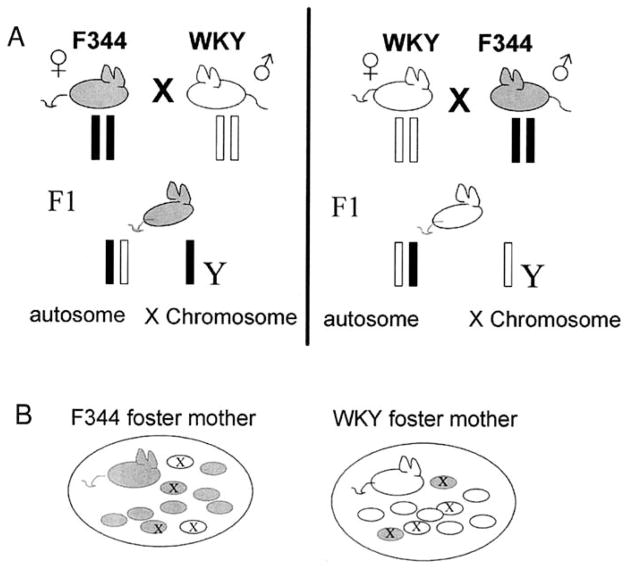Figure 1.
Schematic showing the reciprocal cross/matings and the cross-fostering design employed in this study. (A) Reciprocal crosses between F344 and WKY inbred strains produce male F1 rats that are heterozygous on all autosomal loci and contain the X chromosome from the maternal strain. (B) The cross-fostering design consisted of transferring 2 male F1 pups from a WKY mother (white) to be raised by a F344 foster mother, while simultaneously fostering 2 F1 males from a F344 (gray) to a WKY litter. In addition, 2 native control pups from each litter were identified at the time of cross-fostering. All 4 experimental animals (2 native, and 2 cross-fostered) are marked with an X in the schematic. In all, 100 animals were analyzed: 25 pups from each group (F344 native, F344 foster, WKY native, WKY foster), 25 native pups from a F344 biological mother raised by its own F344 mother [F 1(F X W)/F344], 25 cross-fostered pups from a WKY biological mother raised by a F344 foster mother [F1(W X F)/F344], 25 native pups from a WKY biological mother raised by the WKY mother [F1(W X F)/WKY], and 25 cross-fostered pups from an F344 biological mother raised by a WKY foster mother [F1(F X W)/WKY]. F344, Fischer 344; WKY, Wistar Kyoto; F1, first-generation.

